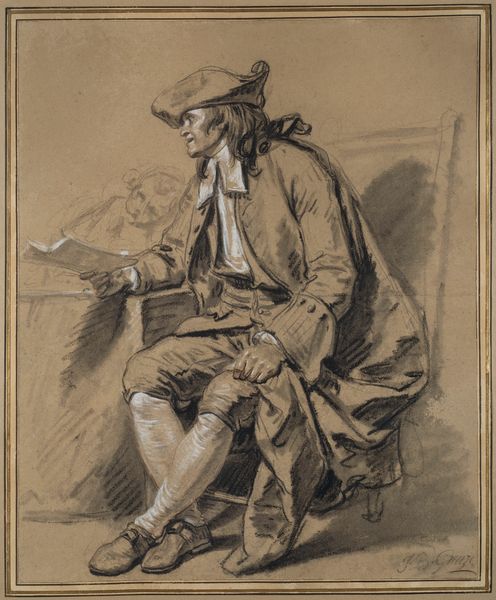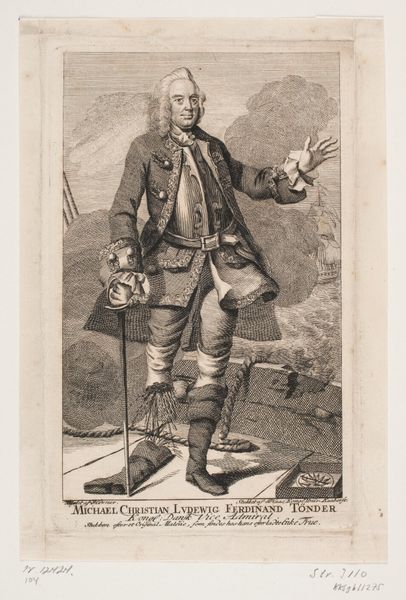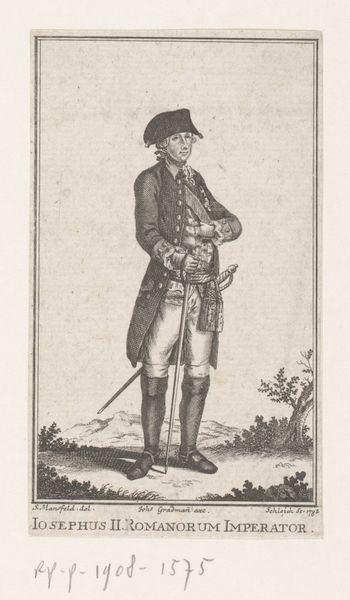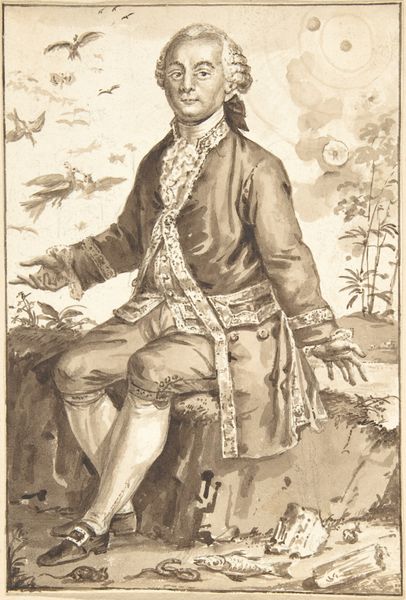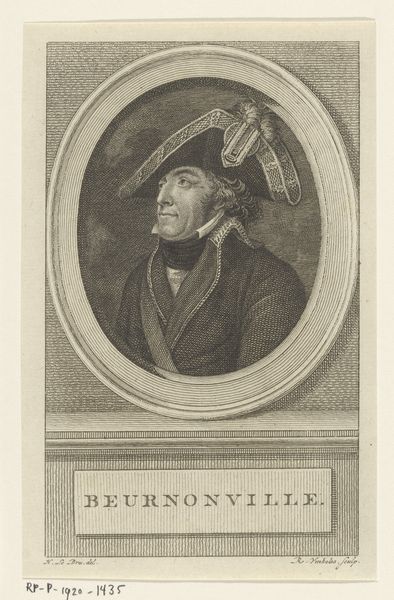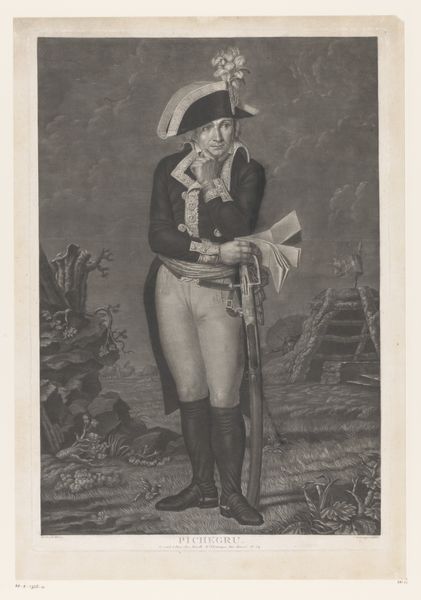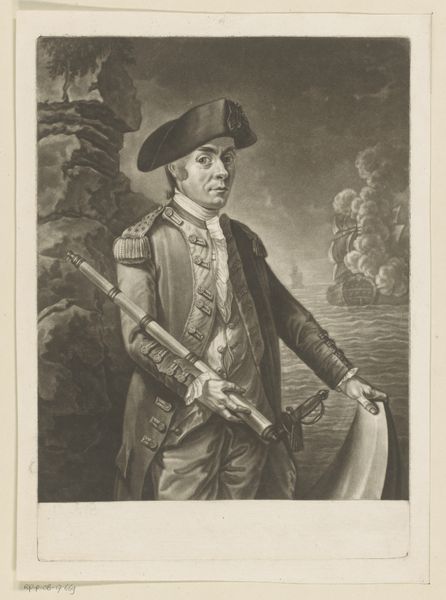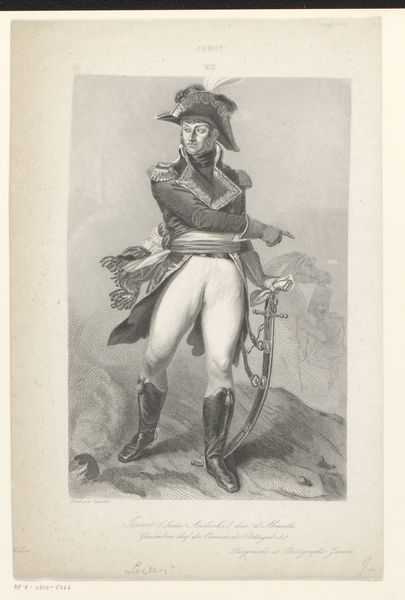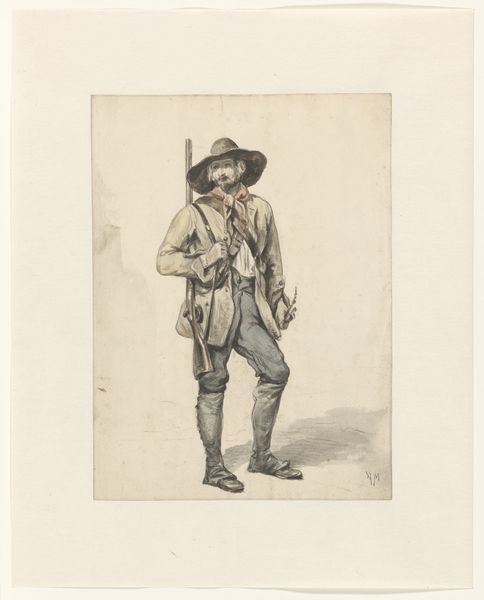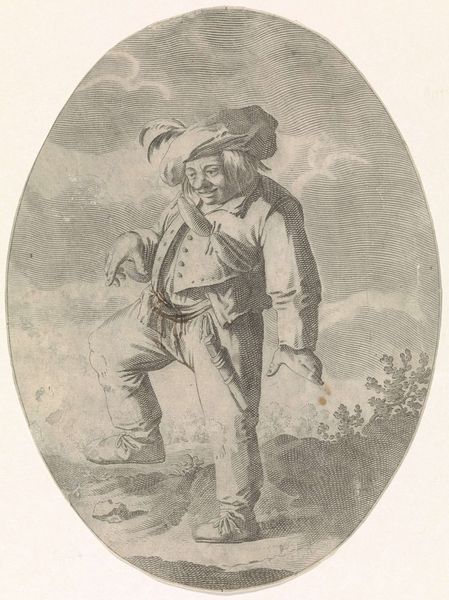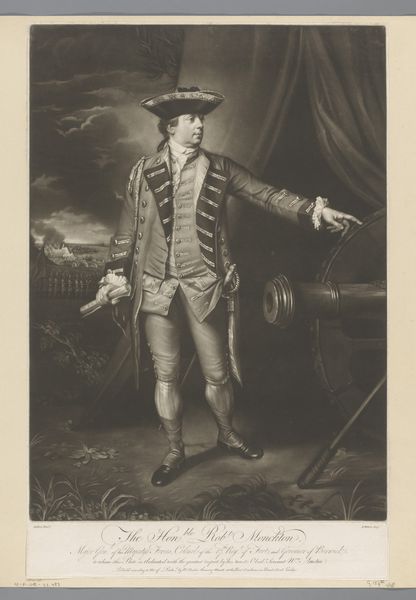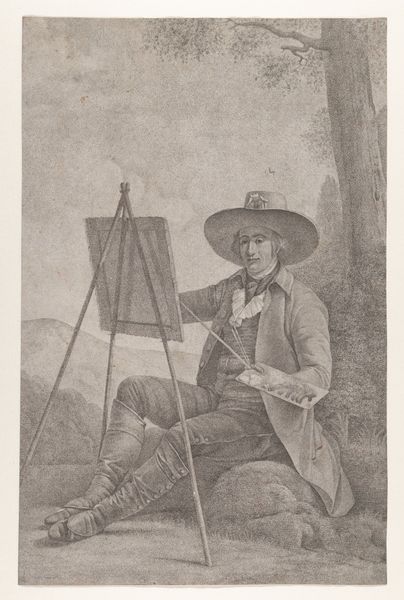
engraving
#
portrait
#
neoclacissism
#
pencil drawing
#
19th century
#
history-painting
#
engraving
Dimensions: height 311 mm, width 217 mm
Copyright: Rijks Museum: Open Domain
This engraving of Wiert Adels was made by Charles Howard Hodges, an Englishman working in the Netherlands during a period of great political upheaval. The image presents Adels as a man of action: armed, leaning confidently on what appears to be a ship’s cannon, and gazing towards some off-image point of interest. The inscription identifies him as the captain of a Dutch ship, the “Bloegendi Blom”, which resisted capture by the French. In this light, the portrait makes visible the political and military tensions of the time. It was a period when the Dutch Republic was under pressure from both internal political divisions and external threats, particularly from revolutionary France. Engravings like this played a crucial role in shaping public opinion. They valorize individual acts of bravery and resistance. Art historians will want to understand the role of patronage. Who commissioned this engraving, and for what purpose? What institutions shaped the market for such images? By answering these questions, we can better understand the relationship between art, politics, and society in the late 18th century.
Comments
No comments
Be the first to comment and join the conversation on the ultimate creative platform.
